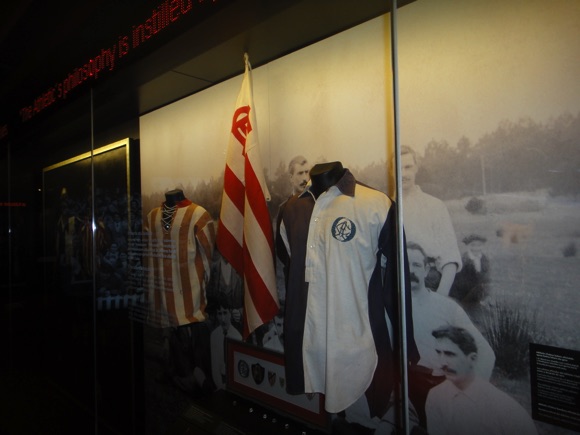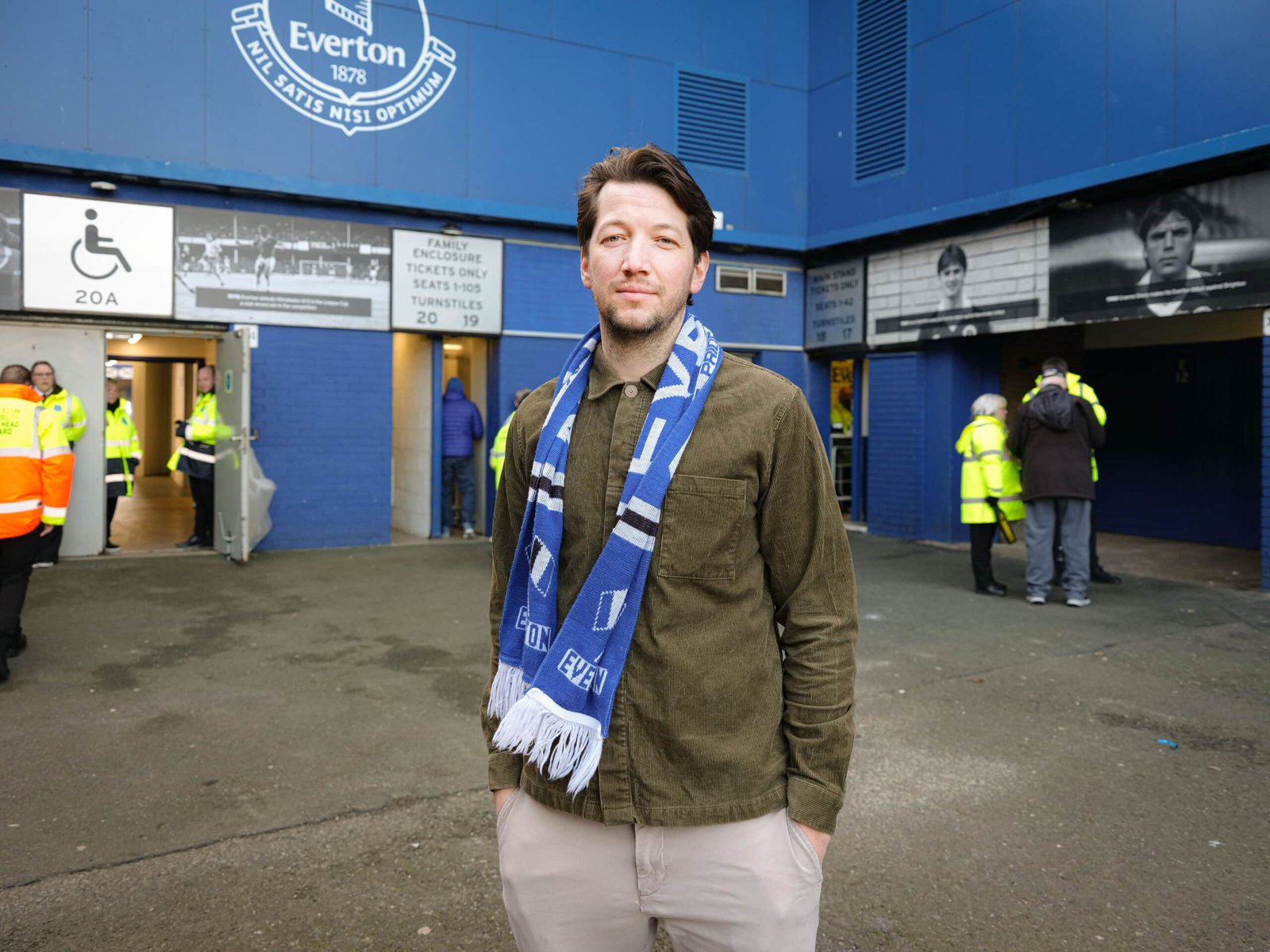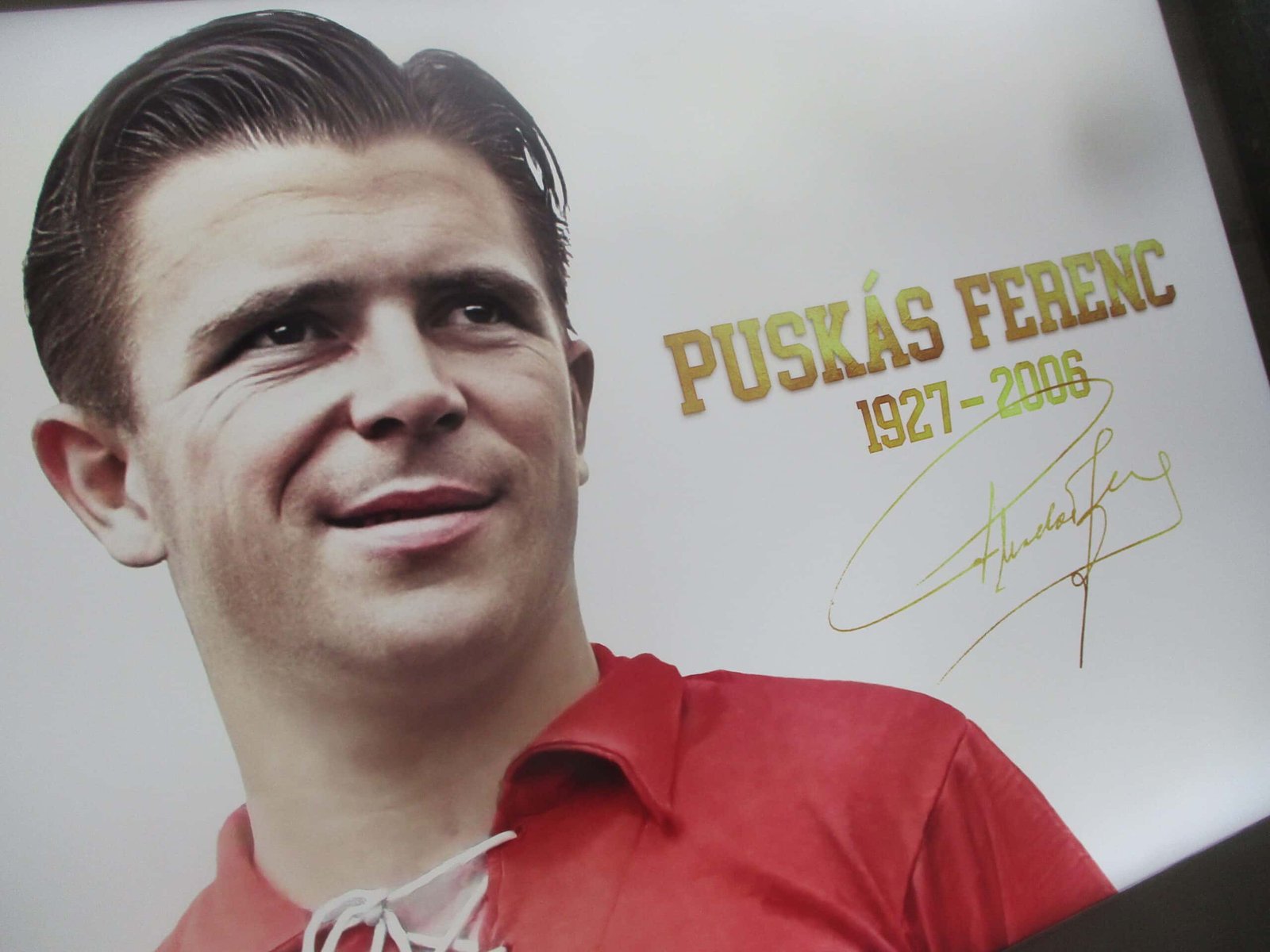Georgia's national stadium is hosting a vital Euro qualifier – but secrets surround its namesake hero
This Tuesday, March 26, the biggest game in the history of Georgian football takes place at the Boris Paichadze Dinamo Arena in Tbilisi. Georgia play Greece in the final qualifying match for a place at Euro 2024. While the visitors won the tournament 20 years ago, the hosts have never appeared at a major finals.
Whether it’s over 90 minutes, 120 or on penalties, the play-off winners will be decided that night at the country’s national stadium, filled close to its 54,000 capacity for the visit of Luxembourg in the qualifying semi-final on March 21.
Georgia may have produced many supremely talented footballers, some representing the USSR in World Cups gone by, but their only international honours have come at club level. In 1981, Dinamo Tbilisi won the Cup Winners’ Cup. In 1979, a crowd of 110,000 packed into the arena, shortly after it had opened, to watch Dinamo tear Liverpool apart in the European Cup, 3-0.
Back then, it was called the Vladimir Ilyich Lenin Dinamo Stadium. It dropped its Soviet-era name in 1995, following Georgian independence from Moscow. The stadium now honours a man who was born exactly 80 years before the name change.

But Boris Paichadze was a Soviet hero, if perhaps a reluctant one. Not only that, but he was an acquaintance of Stalin’s brutal henchman, football obsessive Lavrentiy Beria. All three men, footballer and both Communist figureheads, were, of course, Georgians.
Moreover, the little-known Hungarian football coach thought to have brought Paichadze to Dinamo Tbilisi in 1936 was executed the following year in a purge organised by Beria and overseen by Stalin.
Boris Paichadze was born in 1915 and raised in Poti, a busy port on the Black Sea, where his father had found work as a docker. The shipyard had been the scene of fighting on the barricades during the workers’ strikes of the First Russian Revolution of 1905, precursor to 1917.
It was around that time that a young Georgian subversive by the name of Jugashvili took part in his first series of similar insurgencies just down the coast in Batumi. He later called himself Stalin.
Also in the early 1900s, Poti was where British sailors introduced the game of football to Georgia. Local club Kolkheti-1913 is considered one of the oldest in the South Caucasus.

As a teenager, Paichadze showed great promise as a footballer, first playing for the Poti Shipyard XI, then the team of the Transcaucasian Industrial Institute. Georgia had no league as such but, after the Soviet takeover of 1921, it soon saw the rise of Dinamo in Tbilisi, formed in 1925 as part of a burgeoning all-Soviet concept envisaged by Felix Dzerzhinsky.
Mastermind behind the Secret Police, aka the KGB, ‘Iron Felix’ conceived of a network of sports clubs across the USSR, starting, of course, with Dynamo Moscow, which had its own stadium and even its own store. Opened the same year as Lenin’s death, in 1924, the shop stocked flags and other souvenirs bearing the classic logo of the Russian letter ‘D’. The Soviets were pioneers in many things: branding of football clubs was one.
All sporting the proud ‘D’ were Dinamo clubs in Leningrad, Kyiv, Minsk and beyond. In Tbilisi, Dinamo played their first game in 1926 against their namesakes from Baku. A year later, a junior club was created.
A first Russian, then a first Soviet, championship for city teams had been set up in 1920 and 1923 respectively. Football was also integral to the communal celebrations and spartakiads which dovetailed with the activities of Red Sport International. Its mission was to spread Communist ideology throughout Europe by means of sporting exchanges.

One such took a Moscow team to Paris towards the end of 1935. It was there that the Soviet authorities first became aware of a certain Jules Limbeck, born Gyula Limbeck, a Magyar football coach schooled in the classic Hungarian methodology of the time. Within two years, he would be dead, presumably executed.
What little we know about this shadowy figure has been painstakingly researched by the doyen of Hungarian-language sports journalism in Romania, András Gáll. In his comprehensive article, “The Hungarian football coach up before Stalin’s firing squad – was Gyula Limbeck a spy or the father of Soviet football?” published in Nemzeti Sport in 2021, the nonagenarian Gáll delves into the cloudy background of his fellow Transylvanian.
Gyula Limbeck led the forward line of the great Budapest teams of the post-World War I era, whose passing game had been developed by legendary English coach Jimmy Hogan. Scores of Hungarians then exported Danubian football around the world, particularly, but not exclusively, across Italy and later, South America.
Anyone au fait with the game would have followed this development with interest. This was also why young chairman Jean-Bernard Lévy, who had engineered the rise of Racing Club in Paris, hired Hogan in 1932.

By then a coach, Gyula Limbeck had led Galatasaray to the Istanbul title in 1931 before moving to France to find work at various clubs, including Racing. He was now operating as Jules Limbeck.
When a team comprised of the best players from Dynamo and Spartak Moscow played an exhibition game against Racing at Christmas, 1935, Limbeck was on the hosts’ coaching team. He then, bizarrely, pops in Prague, alongside experienced Czech coach Antonín Fivébr, to welcome a sports delegation from Moscow on a fact-finding mission.
Within weeks, Limbeck and Fivébr were both working in the USSR. This was 1936, a seminal year for Soviet football. The Soviet Premier League was about to be established, as well as a showcase annual exhibition match on Red Square, before the Party leaders.
It is also now that Boris Paichadze comes back into the picture. The young Georgian star had been making a name for himself back in Poti but the concept for the new Soviet League was to feature a strong team from each major republic. Who stronger, then, than all the Dinamos?

The Moscow ‘D’s had walked the first Soviet Championship of spring 1936, winning the title unbeaten. Now it was time to expand and strengthen the league for the autumn 1936 edition. Who better to help in that process than two Central Europeans with considerable international experience? Fivébr coached Spartak, Limbeck… Stal Dnipropetrovsk.
But with Dinamo Tbilisi the only newcomers to the elite league that second season, the Georgians needed preparation and Limbeck was selected as the man to put the players through their paces. By now, the team included a 21-year-old Boris Paichadze, whom Limbeck had spotted and lured from Poti.
Or had he? Georgian sources claim there was something deeper afoot. The Poti team had recently and successfully toured Ukraine, during which time they had come to the attention of more people than Gyula Limbeck, who would have had contacts in Dnipropetrovsk.
According to a Georgian article honouring the legendary player on the centenary of his birth in 2015, Boris Paichadze was approached by none other than Lavrentiy Beria in person to come to Tbilisi. Stalin’s right-hand man put the head of Georgia’s NKVD, forerunner of the KGB, in charge of the arrangements, Sergo Goglidze. (Beria and Goglidze would later be executed on the same day in 1953, months after Stalin’s death.)

The other grey area to this backstory is the fact that Paichadze’s father was in prison at the time, again according to Georgian sources, although it’s not clear why. All the same, his potential release would have given the young footballer further reason to up sticks.
What we know for sure is that Paichadze was Dinamo Tbilisi’s top scorer in that autumn 1936 campaign, lifting the Georgian club into third place, above fellow Dynamos Kyiv and Leningrad.
But, according to András Gáll’s research on club coach Gyula Limbeck, quoting from the local paper Vechernyi Tbilisi in 1936, the Hungarian was imposing draconian training methods on his unhappy players. That October, towards the end of the campaign, Limbeck, ‘the man who discovered Boris Paichadze’, was moved on to Lokomotiv Moscow.
By now, it was 1937, and the Stalinist purges were raging. The year before, Dynamo and Spartak Moscow had played an exhibition game on a carpet of green felt laid across Red Square. For the next series of showcase fixtures in 1937, staged at Dynamo’s stadium in Moscow, a Basque XI was invited from Spain.

The Soviets had been supporting the Republican side against Franco’s forces in the Spanish Civil War. To highlight the Basque cause and raise money, an Euzkadiko selekzioa, including members of Spain’s 1934 World Cup team, played games in France, Czechoslovakia and Poland.
They arrived in Moscow just as Franco entered Bilbao, in June 1937. Waiting for them in the Soviet capital was a heroes’ welcome, and Lokomotiv Moscow, the first of eight opponents in the USSR. Coaching the Railwaymen was, of course, Gyula Limbeck.
With not only Beria but Stalin himself in the crowd, the Basques played Lokomotiv off the park, going 4-0 up in 20 minutes. True, the visitors included José Muguerza and Guillermo Gorostiza, whose Spain side had taken eventual winners Italy to a replay at the previous World Cup – but the reaction in Moscow following this 5-1 shaming was that the Soviet team had been poorly prepared. Worse, they had displayed ‘bourgeois methods’.

Limbeck was not the only coach at fault, Dynamo Moscow were also tonked 7-4, but if there had to be a scapegoat, foreign, Jewish and intellectual Limbeck fitted the bill. A series of jovial caricatures of the Basque players appeared the next day in Sovietsky Sport, credited to Limbeck, in actual fact a fine illustrator. It was the last time his name appeared in print while he was alive.
At some point that year, Limbeck was executed. His travelling companion, the Czech Antonín Fivébr, made good his escape back to Prague.
And what of Boris Paichadze? The one-club Georgian stayed at Dinamo Tbilisi until 1951, prevented from moving to the more illustrious Spartak by Beria.
The gifted striker would invariably be on the podium when it came to handing out Soviet league medals, even played in three cup finals, but never lifted a national trophy. A coach for only one season at Dinamo, Paichadze worked as director of the national stadium for 23 years.

The predecessor of the Dinamo Arena was the Central Stadium, built on the same site in 1935. In 1937, it gained the name of the Beria Dinamo Stadium – until 1953, of course. A decade later, the stadium was revamped and expanded but, as Dinamo began to compete on the international stage, another prominent politician, Georgia’s Party leader Eduard Shevardnadze, pushed Moscow to release funds to build a mega-stadium in the Soviet mould.
Dinamo were duly granted a 78,000-capacity colossus, where they would play prestigious European fixtures and host their namesakes from the fellow republics of Russia, Ukraine and Belarus in the golden age of Soviet football, the 1980s.
As top dogs in Georgia’s struggling independent league, however, Dinamo would have welcomed the rebuild and downsizing of 2006 which brought the capacity down to 54,000. Tuesday’s vital game with Greece is probably the first time that Georgia’s national stadium could have done with those 78,000 places. Tickets for the match sold out in five-and-a-half hours.
Boris Paichadze died in 1990, in the same month as the first open, democratic elections were held in Georgia. Granted candidate status of the EU in December 2023, Georgia is at a crossroads, one way leading to Europe, the other back to Moscow. Participation in the Euros might just swing public opinion – and sweep away a few ghosts from the national stadium.











